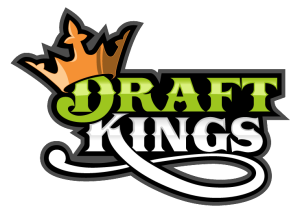PGA DFS Beginner’s Guide
Welcome to DailyOverlay.com’s Beginner’s Guide to Daily Fantasy Golf! You’re here, presumably, because you want to start playing PGA DFS. By then end of this article, the hope is that you’ll be armed with everything you need to compete in daily fantasy golf games.
Later in this article, I’m going to lay out a basic weekly process that should help you hit the ground running. After that, I’m going to talk a little bit about game selection. But first, I’m going to start off by defining and reviewing some terms, ideas, and statistics common to daily fantasy golf. Once you’ve become familiarized with these topics, the rest should come much easier.
A statistic that is derived from a golfer’s ranking in total driving (see below) and GIR (see below). It’s a simple addition of those two rankings, and the lower the number, the better.
COURSE HISTORY
Course history refers to a golfer’s performance at aspecific golf course. If a golfer has done well in the past at a given course, he’s probably more likely to do well at that course in the future.
FORM
Form refers to the recent performance of a golfer, and can be either good or bad. You’ll often hear the phrase, “rounding in to form.” What that means is the golfer looks to be playing better of late and could be headed for a good week.
GIR (or GREEN IN REGULATION)
GIR stands for green in regulation. A green in regulation occurs when a golfer reaches the green in at least two or less strokes than the par number for a given hole. For example, when a golfer reaches a par 4 in two shots, that is a green in regulation.
As a statistic, GIR represents the percentage of greens a golfer hits in regulation.
PAR BREAKER
Both a way to refer to as a score below par (birdie, eagle, etc.) and a golfer who routinely scores below par on a hole-to-hole basis.
SCRAMBLING
Percentage of holes on which a golfer scores par or better despite failing to hit the green in regulation.
STROKES GAINED: PUTTING
A statistic that measures the number of putts a golfer takes relative to the PGA Tour average, taking into account the initial putt distance on each green.
STROKES GAINED: TEE-TO-GREEN
A statistic that measures the number of strokes a golfer takes, relative to the PGA Tour average, to reach the green.
TOTAL DRIVING
A statistic that is derived from a golfer’s ranking in driving distance and driving accuracy. It’s a simple addition of those two rankings, and the lower the number, the better.
VEGAS ODDS for GOLF
The word “Vegas” is often used to represent the idea of odds. The odds being discussed don’t necessarily have to originate from Las Vegas. It’s slang. Golf odds are usually expressed in one of two fashions: fractional (example: 12-1) or money line (+1200). Fractional odds tell you how much money you will win for every $1 you bet. In our example, you will win $12 for every $1 you bet (and if you win, you get your initial bet back, so a $1 winner at 12-1 actually pays $13). Money line odds tell you how much money you will make in relation to $100. So in our example, if you bet $100, you will win $1200 (plus your bet back). An easy was to think about the “+XXX” numbers is to just divide them by 100. +1200 and 12-1 are the same thing. With money line odds, you can have negative numbers as well. When a number is negative, that means you have to bet that amount to win $100. So a -1200 number means you have to bet $1200 to win $100 (again, plus your initial bet back). In golf, you almost never see a negative number, so you don’t really have to worry about doing that math.
There are all sorts of bets out there like first round leader, player props, player match-ups, etc. For our purposes, you probably only need to consider the overall odds to win agiven tournament.
PGA DFS SCORING
Now, let’s delve a little into fantasy golf scoring. Depending on which site you play on, it’s a little more complicated than just birdies are good and bogeys are bad.
I’m going to review the scoring system on DraftKings, as DK is the fantasy golf industry leader in terms of traffic. If you’re going to play on other sites, make sure you check out the scoring system. Different sites promote different strategies. For example, if you play on Victiv, scoring is directly tied into a golfer’s score relative to par, but the twist is only your five best scores out of seven selections count.
On DraftKings, you select six golfers each week, and all six scores will count towards your final score. You are given a salary cap of $50,000 with which to make those six selections. Golfers on each team will accumulate points as follows:
Per Hole Scoring
- Double Eagle (DBL EAG): +20 PTs
- Eagle (EAG): +8 PTs
- Birdie (BIR): +3 PTs
- Par (PAR): +0.5 PTs
- Bogey (BOG): -0.5 PTs
- Double Bogey (DBL BOG): -1 PT
- Worse than Double Bogey (WORSE DBL BOG): -1 PT
Tournament Finish Scoring
- 1st: 30 PTs
- 2nd: 20 PTs
- 3rd: 18 PTs
- 4th: 16 PTs
- 5th: 14 PTs
- 6th: 12 PTs
- 7th: 10 PTs
- 8th: 9 PTs
- 9th: 8 PTs
- 10th: 7 PTs
- 11th–15th: 6 PTs
- 16th–20th: 5 PTs
- 21st–25th: 4 PTs
- 26th–30th: 3 PTs
- 31st–40th: 2 PTs
- 41st-50th: 1 PTs
Streaks and Bonuses
- Streak of 3 Birdies of Better (MAX 1 Per Round) (3+ BIR STRK): +3 PTs
- Bogey Free Round (BOG FREE RD): +3 PTs
- All 4 Rounds Under 70 Strokes (ALL 4 RDS UND 70): +5 PTs
- Hole in One (HOLE IN ONE): +10 PTs
There are a few things you should take note of with respect to this scoring system. First, birdies are more helpful than bogeys are harmful. When playing on DraftKings, you should focus more on par breakers rather than steady par machines. Next, there are a lot of bonuses out there to be had. Again, golfers who go low are rewarded. First place gets 30 extra points, which is the same as making 10 additional birdies. Also, the gap between first and second place is huge; worth just over three additional birdies. To win a GPP, you’ll need a couple of guys who finish at the very top of the leader board. Finally, you can see how important it is to have all of your golfers make the cut. Everyone who finishes in the top 50 receives at least one bonus point, and they all get 36 more holes to rack up points (even a measly 36 pars = an additional 18 points). So to recap, look for guys who can rack up birdies, have a shot to contend, and are safe bets to make the cut.
WEEKLY PROCESS FOR DFS GOLF
Now that you know a little bit of the lingo and you’re familiar with the scoring system, I’m going to lay out a basic weekly process that should help you get started. You can modify this process a little as you go to fit your needs, but I think it’s a solid foundation for beating games on a weekly basis.
Let’s say this is your first week playing PGA DFS. You’re a golf fan, but you haven’t really been keeping up with the Tour. That’s perfectly fine. This is how I would attack it:
First, I would spend some time scrolling through the past four weeks of results. You need to know who’s in good form and who’s not. You’ll be able to notice some trends right away. As you go, you should try and keep up with the Tour as much as possible. It will pay huge dividends. Ideally, you should try to catch a couple of hours each weekend of TV coverage, but I fully understand life comes first and not everyone has that kind of time. As long as you keep up with weekly results, you should be fine. Just spend a few minutes each Monday scrolling through the past week’s results and you’ll be good to go.
Next, I would head over to DraftKings and spend some time with the player pool and salaries. You need to know who’s actually playing this week, right? You don’t need to make actual picks at this point; just get a feel for the pricing and a loose idea of players you want to target.
Now, you’ll want to take a look at past tournament results for the course they’re playing that week. Say it’s Masters week, you’ll want to try and figure out who plays well at Augusta National. Once you know who succeeds, you’ll be on your way to figuring out why a certain player may or may not play well at a given course.
For example, Bubba Watson has had a ton of success at Augusta. Why? He hits it long off the tee, taking a lot of trouble out of play, and he’s good around the greens. Now you can target other bombers and scramblers. One caveat, you might run into a situation where a guy really just doesn’t profile well for a course, yet he keeps finding success there. Sometimes a course fits a golfer’s eye, and you should roll with that. Tip: everything doesn’t always have to fit in a nice box. You can like a golfer for one reason and like someone else for a different reason. The important thing is to have a reason why you’re making a pick.
At this point, you’ve got some idea of how this week’s course will play. But let’s say you’re looking for a little additional help. There are a number of sites out there that offer both free and/or paid weekly fantasy golf advice (DailyOverlay.com puts out free weekly PGA content that includes selections as well as a consensus article of the top consensus picks around the industry).
When you’re first starting out, I recommend that you take in as much information from as many different sources as possible. As you go, you will be able to differentiate good advice from bad, and you’ll be able to lean on outside information less and less. It’s always good to know where other people are coming from, but you should also want to be making your final decisions on your own.
So now you’ve done a little course history research on your own, and you’ve received some outside help from experts on what to look for. Your next stop should be pgatour.com, and you should spend some time with the statistics you think will matter. Does the course suit bombers, ball strikers, or scramblers? Which yardages will matter this week? All of this matters. The goal here is to end up with somewhere around 10-20 golfers you actively want to use. You can’t play everyone.
After you’re done combing through the statistics, you should have a list of targets for the week. It’s time to head back over to DK to see how much each of those guys cost. Play around a little in the “Create a Lineup” section of DraftKings, and see what kind of combinations you can come up with. I think there’s a lot of value in the trial-and-error method of constructing lineups, especially when you’re starting out. You need to figure out what certain salaries mean for overall roster construction. Even if you’re only planning playing one lineup for the week, make a few so that you have options come Wednesday night.
You’re almost home. You’ve got a couple lineups you like, or at least a couple golfers. To put the final touches on your research, I’d do a few things. I’d go back through some expert articles, podcasts, and videos, and see who they like. They might bring up something you hadn’t previously thought of. I’d consider the Vegas odds (I recommend either pinnaclesports.com or vegasinsider.com). The guys who are paid to set lines are very good at what they do. You should always take their opinions into account. Next, I’d check the weather forecast for the city hosting the event. The first two rounds of most golf tournaments are broken up into two starting waves. Each wave will play a morning session one day and an afternoon session the other. Sometimes, one wave will clearly benefit from the weather more than the other. It’s not something I use to start making picks, as a golf tournament is four rounds and there’s nothing you can do about it on the weekend, but it is something I’ll use to break ties when I like two players equally. Finally, I’d check news services like Rotoworld or even Twitter for golfer injury and/or withdrawal news. One of the worst things you could ever do is roster a golfer who isn’t even teeing it up that week.
We’ve come to the end of the journey. You’ve done everything you can do. You have all the information you need to make your ultimate decisions. Make some finals tweaks to those lineups, pick out some games you want to play, and let it rip. All that’s left to do is follow along and enjoy the weekend!
I’d like to end this guide talking about game selection. There are two major types of daily fantasy games you can play: cash games and tournaments (GPPs). Cash games offer less risk, reward, and variance, as you will usually be playing to double your money either against a single opponent or a large field where the top 50% of finishers get paid. Conversely, tournaments will offer more risk, reward, and variance, as you will usually be playing against hundreds or even thousands of opponents where only 20% of the field will be paid and top prizes can reach seven figures! If you want to play it safe and protect your money, your primary focus should be cash games. If you’re playing DFS for entertainment purposes and/or you want to chase those huge payouts, then you should probably focus on GPPs. Either way you go, you should never put any money in play that you aren’t comfortable losing. If you’re a beginner, you should definitely start out small and go from there. You don’t have to put a lot of money on the line to have a blast playing PGA DFS. For example, DraftKings now offers a weekly $3 tournament with a first prize of $100,000! Play the games that fit your personality, and most importantly, have fun!
Thanks for reading, and I hope I was able to provide you with the tools you need to get started in PGA DFS. Good luck!







